Country Report: Ireland
With a population of just 4.7 million and a landmass smaller than the state of Indiana, the republic of Ireland stands as an unlikely pharmaceutical manufacturing powerhouse.
This sponsored supplement was produced by Focus Reports.
Project Publisher: Mariuca Georgescu, Diana Viola
Senior Editor: Louis Haynes
Editor: Patrick Burton
Project Director: Valerie Baia, Alexander Ackerman
Project Coordinators: Karen Xi, Frances Doria, Brandon Mourich
Project Assistants: Claudia Prado
Photo © Flickr: damork
For exclusive interviews and more info, please log onto www.pharmaboardroom.comor write to contact@focusreports.net
Playing to Win
With a population of just 4.7 million and a landmass smaller than the state of Indiana on the edge of Europe, the Republic of Ireland stands as an unlikely pharmaceutical manufacturing powerhouse. Dating back to a decision made in the 1960s to target the sector as a strategic industry, today Ireland ranks as the largest net exporter of pharmaceuticals in the European Union (EU) and seventh largest in the world.

No surprise then that the country is fiercely supportive of the life sciences community, with government, academia and industry closing tight ranks around the concept of 'Ireland, Inc.' to present Ireland as the world's most attractive location for pharmaceutical investment. Despite 2016 representing a year of relative political turbulence, both domestically as elections in February returned a hung parliament, resulting in Ireland's first minority government in nearly four decades, as well as internationally with Brexit in June, the three sets of actors remain steadfast in their commitment to anchoring life sciences as a strategic pillar of the Irish economy.
Given their penchant for team sports, it is little wonder that the Irish have settled on collaboration as the winning formula, if not panacea. As Minister of Foreign Affairs and Trade Charles Flanagan TD highlights, Ireland's first major foreign policy statement in twenty years in 2015 reaffirms its place in the world as "The Global Island." As competition for global pharmaceutical investment escalates, Ireland has made it clear that it is certainly playing to win.

Charles Flanagan, minister for foreign affairs and trade
BUILDING IRELAND, INC.
Despite their association with lucky little green men, Ireland's meteoric success in the life sciences industry has not been merely a happy accident. A remarkably consistent industry strategy emphasizing the strategic importance of the life sciences industry to Ireland's overall economy – in 2016, life sciences accounted for just over half of Ireland's total goods export, totaling EUR 64 (USD 68) billion – underpins Ireland's attractiveness as a location for foreign direct investment (FDI) – beyond its headline corporate tax rate of 12.5 percent. As Minister Flanagan TD outlines, "Ireland is at the forefront of this revolution in health care and wellbeing. We are determined that the sector will be a key feature of our economy and Ireland's global brand...We can only achieve this with a whole-of-government approach, working as closely as possible with the industry and the research ecosystem."

Barry Heavey, head of life sciences, IDA Ireland
At the vanguard of this all-government approach stands the Industrial Development Authority (IDA) Ireland, in charge of promoting Ireland to foreign investors. Nearly seven decades of experience has honed the IDA's skills razor-sharp, and its current strategy goes beyond specific industries to center on the areas of Advanced Manufacturing, Global Business Services and R&D Operations. Barry Heavey, IDA's head of life sciences explains, "Fundamentally, the goal for the IDA is to be the catalyst to support the growth of strong sectors such as biopharma, medtech and tech – and then to position Ireland as a global collaborative hub for convergence between these strategic sectors."

Julie O'Neill, EVP global supply, Alexion Pharma
Since its establishment in 1949, the IDA has done a phenomenal job of realizing its 'industrialization by invitation' strategy, attracting an extensive list of some of the world's largest brands to Ireland, but never content to rest on their laurels. According to Heavey, "We have established a great track record of working with companies and sectors on a one-to-one basis, but now we need to push beyond that and position Ireland as the global hub for industrial collaboration in the life sciences." He cites diabetes as a showcase example of the potential for cross-industry collaboration: "we have Sanofi making their diabetes drug Lantus in Waterford; Nypro, West Pharma and Becton-Dickinson producing the delivery systems here; IBM establishing a Watson health center in Dublin, and Intel developing 'Internet of Things' sensors and IT devices which can be used in connected health applications."
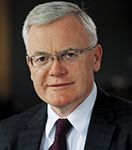
Oliver O'Connor, chief executive, IPHA
Another core piece of the puzzle contributing to Ireland's attractiveness to pharma FDI is the Irish regulator, the Health Products Regulatory Authority (HPRA), which has built a fearsome reputation as one of the most stringent regulatory authorities in the world: "if you pass a HPRA inspection, you can pass any inspection" as the saying goes. Surprisingly, however, in an industry where the regulator and the pharma company often play on opposite teams, HPRA is at once the Irish industry's toughest critic and biggest fan. Newly appointed chief Dr. Lorraine Nolan firmly believes that "regulators need to enable and not hold back innovation." Fittingly then, 'innovation' is a core theme of HPRA Strategy 2016-2020, with a host of new initiatives like the establishment of an Innovation Office. The aim, she outlines, is to "enable both regulation and industry awareness of regulations to evolve in tandem with the development of new products [so that] regulation does not become the barrier at the end of the process."

Dr. Leisha Daly, country director, Janssen
The crux is collaboration, not conflict. Nolan emphasizes, "the life sciences industry is an important stakeholder with whom we engage not just through regulatory activities like inspections and assessments, but also through routine and consistent interactions, primarily led through the industry associations [as well as] one-to-one meetings with companies." As Alan MacNeice, site leader at Jazz Pharmaceuticals' first global manufacturing site in Athlone, attests, "the HPRA is a huge asset, not just because they are diligent, but because they are collaborative in exercising that diligence." Julie O'Neill, EVP at Alexion Pharmaceuticals, another new entrant to Ireland, adds that, "this regulatory stringency is centered on HPRA's strong patient-centric focus." For her, it is a no-brainer: "Doing things right the first time is far more cost-effective than having to redo it. The value of compliance is tremendously powerful."

Shane Ryan, country lead, Takeda
Much like the Irish sport of hurling, conducting R&D in Ireland is something often overlooked by international players. Ireland has always faced a number of intrinsic hurdles in this space, not least the small patient population and more recently, the economic crisis, which forced the Irish healthcare system to focus more on service delivery at the expense of research activity. As the Irish economy recovers, however, the Irish government has unveiled Innovation 2020, a new strategy for Irish science, R&D and innovation, which will more than double expenditures on R&D by the end of the decade. "Innovation 2020 is essentially the blueprint for delivering on our ambitious vision to assert ourselves as a Global Innovation Leader," discloses John Halligan, minister of state for training, skills and innovation. "This five year strategy and our corresponding 2017 Action Plan for Jobs together will serve as the roadmaps though which we attain some EUR 600 (USD 638) million in RDI investment annually from foreign enterprise, support over 850 enterprise-led collaborative projects and cultivate as many as 155 commercially relevant technologies and 25 spin-offs," he elaborates.
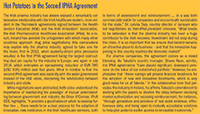
Meanwhile, the national foundation for investment in scientific and engineering research, Science Foundation Ireland (SFI), takes its mandate very seriously, adopting an aggressively pragmatic approach to R&D. Director Professor Mark Ferguson contextualizes, "given the severe financial constraints the government faced [we had to justify that] every Euro of taxpayer money was going into something not only excellent but that would also bring value". For him "seeing Irish Research Institutions engaging in repeat industrial business of escalating financial value is just as interesting as seeing them publishing papers in Nature, Science, or other academic publications."
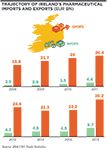
The results speak for themselves. Ireland "moved up two places to 14th in the global rankings for quality of science ... and we were ranked globally second for scientific nanotechnology and chemistry," Ferguson acclaims. The knockout? "Ireland is actually the most efficient EU country in terms of innovation output" – and most impressively – "we have achieved all of this with a level of public expenditure on science which is below the EU average."

Matt Moran, director, Bio PharmaChem
MOVING UP THE MANUFACTURING VALUE CHAIN
Ireland has accumulated an impressive record of FDI from pharmaceutical companies, predominantly from the US, keen to set up manufacturing bases, initially to avail themselves of the 12.5 percent headline corporation tax rate and the English-speaking workforce. As most modern industrial countries see their manufacturing base leached by low-cost competitors in the East, Ireland has spurned conventional wisdom that developed countries should shun 'low-value' manufacturing in favor of high-value sector like services.
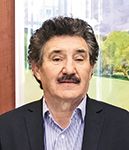
John Halligan, minister of state for training, skills and innovation
As Barry Heavey, Head of Life Sciences at IDA Ireland, makes clear, "manufacturing is not a homogenous industry;" Ireland focuses on "zero-defect manufacturing, characterized by high-value products, embedded IP, tight regulation – industries where companies really do not want a recall, like artificial hips or biologic drugs. This is as high up the value chain as it can get!" Matt Moran, CEO of BioPharmaChemical Ireland (BPCI), the newly renamed manufacturers' association, elaborates, "Our first goal in this regard was to advocate for development plus manufacturing investments, or 'D+M'."

Lorraine Nolan, chief executive, HPRA
With the global biologic medicines market projected to exceed a colossal USD 390 billion by 2020 and pharma actors around the world pursuing an undeniable swing into large-molecule production, Ireland's track record of excellence in pharma manufacturing makes it an obvious candidate for the next generation of medicines. BPCI's Moran explains, "it is impossible to build a largescale biologics facility without significant resources being invested in product and process development onsite ... we estimate that just short of EUR four (USD 4.3) billion of capital investment projects are underway at present." Already, biologics now represent about 20 percent of total manufacturing value in Ireland and it is expected to increase further in the upcoming years.

Alan MacNeice, site leader, Jazz Pharmaceuticals
For long-established players, this new direction requires nerves steely enough to make that leap from existing small-molecule to new large-molecule production plants – like BMS, which is sinking EUR 900 (USD 957) million into its biologics facility in north Dublin. When completed, it will be the largest biologics manufacturing facility in Europe. Noel Heaney, general manager, explains the rationale behind choosing Ireland for such a high-profile investment in biologics: "An investment of nearly USD one billion is not something to be taken lightly. [Ireland has] proven that, given the opportunity, we will deliver. The pharma industry is not in Ireland by accident ... the same recipe will work just as well for large molecules as it has for small molecules. History is our blueprint here."

Despite the seductive call of biologics, Ireland is not abandoning its traditional base of small-molecule manufacturing, injecting the same ethos of innovation and continuous improvement into this sector too. A showcase example is Pfizer's API facility in Little Island. Originally slated for closure following a number of patent expirations for products made at the facility, the team nevertheless "put a lot of effort into improving our competitiveness through operational excellence and the pioneering of new, second-generation manufacturing processes," Site Lead Seamus Fives explains. "As a result of these efforts, by the time our patent expired in late 2011, we had achieved very competitive benchmarks for cost and manufacturing performance" – and the decision to close the facility was reversed.
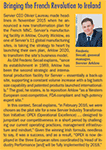
Also testament to pharma manufacturing's commitment to Ireland, small- or large-molecule, Eli Lilly announced in April 2016 that an additional EUR 35 (USD 37) million will be invested in their Cork small-molecule manufacturing facility – Lilly's largest site globally. Deirdre Bourke, country lead, explains that this "will be instrumental in the development and commercialization of a number of products in our late-stage pipeline, and ultimately establish the Kinsale facility as a worldwide center of excellence for API continuous manufacturing."

Mark Ferguson, director general, Science Foundation Ireland (SFI)
BPCI's Moran concludes, "Ireland will never be a low-cost country, but we are efficient and excellent ... As an association, we ran a lot of activities to promote improvements in operating excellence [and] arranged group visits and workshops to train the Irish pharma sector in the best practices from other industries like the automotive industry."
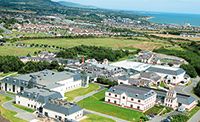
This careful attention to continuous improvement explains why Ireland's track record of excellence is measurable not just in quantity but also quality; Irish facilities often account for significant proportions of their parent groups' production. For instance, Ipsen's manufacturing site in Dublin, opened in 1989, is the group's center for the production and development of two peptide active pharmaceutical ingredients (APIs), used in products representing total global sales of over 700 million in 2015 – over half of Ipsen's global revenue! James Byrne, site leader, sheds some light on why they are entrusted with such heavy responsibilities: "As part of Technical Operations, we have set ourselves some ambitious targets to achieve: zero lost time accidents, 100 percent staff engagement, zero waste, 100 percent 'right first time' and 100 percent customer satisfaction ... we have already enjoyed a lot of success, improving yields by over 30 percent through continuous improvement, increasing 'right first time' by over 100 percent and achieving 'best in class' safety performance." As if that was not enough, Byrne finishes, they are also investing an addition EUR 45 (USD 48) million to add capacity as well as improve existing technology.

Noel Heaney, general manager, BMS Biologics
MAINTAINING THE TALENT PIPELINE
Despite Ireland being in the enviable position of having the youngest and fastest growing labor force in Europe, the relatively small population size and the concentration of pharma companies mean that competition is nonetheless fierce for the talent pool along the entire value chain, from commercial to R&D to manufacturing. With the sector refocusing on biologics, the Irish government has set up a groundbreaking EUR 60 (USD 64) million facility, the National Institute for Bioprocessing Research and Training (NIBRT), to equip and upskill its workforce for the specific requirements of biologics manufacturing. Director Dominic Carolan sheds some light: "the facility we have here is a full scale working pilot plant for biologics manufacture – essentially a flight simulator for the bioprocessing industry where people can train in a risk-free environment and get a strong knowledge of what the industry is like." He cites BMS as an example: "while they are constructing their billion-dollar biologics facility at Cruiserath, their manufacturing science and technology team is being incubated at NIBRT."

Deirdre Bourke, country lead, Eli Lilly
The convivial atmosphere within the Irish industry acts as fertile ground for the cross-pollination of ideas. As Gearóid McDermott, site director at Amneal Pharmaceuticals, asserts "It comes down to the vibrant and robust ecosystem here. There are so many clusters of expertise in the API, pharma, biopharma and medtech sectors and that is fantastic because it fosters talent development. On a more personal level, you can simply pick up the phone and speak to a counterpart to glean their insights."

James Byrne, VP Site, Ipsen
Perhaps counterintuitively for a country so heavily invested in life sciences manufacturing, a group convened under the Department of Education and Skills (DES), the Expert Group for Future Skills Network (EGFSN), has found that public awareness of the life sciences sector is still somewhat lacking. As Chairperson Una Halligan summarizes, "there is limited general awareness of the scale and success of the industry within Ireland, with a resulting gap in the supply of skilled labor specifically relevant to the biopharma sector." She contrasts this with the ICT sector, which has "done a very good job of telling the story about their industry and the job opportunities within it. They had to become very aggressive in selling themselves because there was such a skills shortage and the industry itself was growing so quickly."

To retain to their experienced staff, then, companies have placed huge emphasis on HR and fostering the best work environment. As James Byrne, site lead at Ipsen, explains, "this means being focused on developing people: giving them opportunities for development, empowering them, and creating the right culture and environment. There is a lot of internal career mobility: for instance, someone in production can move to quality assurance (QA) or quality control (QC), and then perhaps on to our Development group." The key, he advises, is "to adopt a more holistic approach to focus on people and people development."

Dominic Carolan, CEO, NIBRT
For many companies, this approach applies to all levels of the company. As Demot Gildea, director of life sciences at Mercury Engineering, proudly highlights, "we also place a lot of emphasis on up-skilling our apprentices at our Newbridge facility ... which enhances their capabilities in very specific processes to give them niche expertise that would be useful in the future ... instead of putting them on temporary leave during quiet periods. I believe our employees ... see the value in these programs, both for the company and them as individuals. Last year, we invested over a million euros in such internal activities."

Gearóid McDermott, site director, Amneal
IRELAND'S INDIGENOUS COMPANIES GROWING INTO THEIR OWN
The strong flow of FDI has led to a vibrant ecosystem of Irish service providers, who have grown up servicing the needs of MNCs. Working for FDI clients put Irish companies to the test and pushed them to work to the highest standards. CEO Philip Martin, who set up Cora Systems, a project management organization software company, concurs: "the presence of these MNCs in Ireland means that we are used to operating at the highest standards of quality. Top global pharma companies – or any company, for that matter – will not buy from you if you are not the best. Facing this intensely competitive playing field has driven us to constantly innovate in order to stay on top, which now puts us in a good position to compete globally."

Tommy Drumm, managing director, Collen Construction
Competing globally means staying on top of the dizzying array of changes the pharma manufacturing industry constantly undergoes and offering the best products. For Collen Construction's CEO Tommy Drumm, this means he must stay up to date on the innovations that different companies are pursuing. For instance, "[a company might be] a significant player in single-use disposable technology. Then there is increasing emphasis on modularization and increasing the level of pre-fabrication as much as possible, which we encourage through BIM and having skids on-site. Other companies [might use] enormous 15,000-litre bioreactors ... We are conscious that our clients will have different needs so we maintain the flexibility and expertise to tailor our solutions to their requirements."

Philip Martin, CEO, Cora Systems
For more niche players, innovation is even more critical. As the industry model transitions from the blockbuster drugs of yesteryear with massive production volumes to 'nichebuster' drugs manufactured for smaller patient populations, pharma companies increasingly seek more flexibility in their manufacturing facilities to maximize operational efficiency. Ronan Quinn, CEO of Ardmac, a specialist cleanroom provider to the life sciences industry, has responded by bringing in second-generation cleanroom products to the market. He explains that "the first-generation products would tend to be solid, monoblock wall or ceiling panels, [adapted] from 'cold room-type' manufacturing processes to suit GMP requirements [which are] fairly limited in terms of their adaptability for future needs and capacity for the integration of mechanical and process services." On the other hand, "the second-generation products we are bringing are very adaptable and based on interchangeable components that make remodelling very easy." He concludes gleefully, "it is like a Lego concept - a multi-use design focus with process flexibility!"

Dermot Gildea, operations manager (life sciences), Mercury Engineering
Increasingly, however, as Irish companies develop their capabilities, the most valuable asset they can offer is their expertise rather than their products per se, and many service providers increasingly tout their problem-solving capabilities instead of pushing products. Martin from Cora Systems opines, "Senior management teams are paid to take decisions. Without the right information, they will make either lucky or poor decisions. With the right information, their profitability could increase by 40 to 50 percent – and that is what Cora Systems provides. We do not sell our products immediately when we approach companies. On the contrary, the first thing we ask is that they do a Discovery Workshop – free of charge – with us so that we can better understand their needs."

Una Halligan, chairperson, EGFSN
This applies across the value chain. David Anchell founded Camida, a bespoke chemicals sourcing company, after a decade with BASF, because he found that "the industry was saturated by companies trying to push their products or services instead of being interested in solving the problems that the pharma companies were facing." Camida's core business is to meet clients' needs for sourcing products for pharmaceutical manufacture. He provides an example of the sometimes unorthodox requests he receives: "we had a company ask us to compile a library of around 1500 active pharmaceutical ingredients (APIs) for their records ... We came up with a bespoke contract and then fulfilled the order in six months." He concludes, "the value that we provide is in listening carefully to the industry and doing our best to serve its needs – and we never charge for the information stream and expertise we provide around the supply of products."

Ronan Quinn, CEO, Ardmac
EPC: A SERVICE SECTOR IN FULL BLOOM
One service niche experiencing a flourishing of demand from pharmaceuticals entities is the engineering, procurement and construction (EPC) segment. "Pharma-related construction represents a highly significant component within the portfolio mix, when you consider that overall construction turnover in Ireland is approximately EUR 17 (USD 18) billion per annum and a large part of that is deriving directly from pharmaceutical industry clients and allied sectors such as life sciences," explains Jim Curley, the CEO of Jones Engineering Group. "Subsequent to the construction of the initial facilities, there are also often bountiful opportunities to provide ongoing support for maintenance and retro fits," he adds.

David Anchell, managing director, Camida
Beyond the substantial revenues to be accrued, working alongside the pharmaceuticals industry has also been of great benefit to Irish EPC firms in terms of their own growth trajectory in scaling the value chain. "The heavy presence of the pharmaceuticals industry has been instrumental to the development of the Irish construction industry because their needs are inherently high-tech and this has compelled entities like ours to cultivate world-class talent, skills and capabilities able to support the requirements of high-end users," reflects Curley. In the end, it becomes a virtuous circle with pharma firms more likely to adopt Ireland as a destination for investment in new manufacturing or research facilities because of the caliber of the cast of supporting actors for critical functions like EPC.

Dave Murphy, CEO, PM Group
The pattern of demand for EPC services is, however, evolving over time: notably, providers are increasingly being asked to act as full partners to their clients instead of contractors providing specific services with limited responsibilities. As O'Gildea from Mercury Engineering reveals, "it is critical that we now act as full partners to our clients rather than contractors. Clients are looking for innovation from their contractors, not just the standard operating practices that have not changed in the past 20 years. For instance, we have developed a purpose-built modularization facility in Newbridge, with a factory and cleanroom for constructing modules."

Jim Curley, CEO, Jones Engineering Group
Dave Murphy, CEO of PM Group, the largest Irish EPC consultancy, stresses that this is a win-win for both client and contractor. "Companies going down the long-term partnership route get much better results. It does not mean that they are overspending; it just enables service providers to engage more positively with their business and their long-term objectives, which are often very specific to their operations. The industry needs to be more collaborative with their delivery partners to enable them to provide the best solutions."
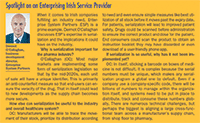
THE IRISH TRENDSETTERS
Having whet their appetite on the domestic market, Irish companies have expanded internationally like their forefathers, enterprisingly on the backs of their key MNC clients within Ireland. The life sciences industry lends itself very well to this, as Murphy from PM Group reasons: "the pharmaceutical business is very internationalized now, and it is ultimately quite a small community. 60 percent of our business comes from 10 or 15 clients, which means we deal a lot with the global capital project teams, who seem to pop up in many of the countries we work in."

Tom Coogan, general manager, Grünenthal
Another Irish company, Enterprise System Partners agrees – having conquered the Irish market, it is time to venture into international waters. Dermot O'Callaghan, cofounder and head of business development, says, "I would say 90 percent of the external provision of Manufacturing Execution Systems (MES) services within Ireland comes from ESP. The next market for us is the US and the rest of Europe. Like many Irish service providers, we have moved abroad with our Irish clients. We broke into the US market based on the credibility we built with big pharma companies on their projects in Ireland. In the same vein, our first project in mainland Europe was with Genzyme; as we had set up their very first MES system in Ireland, it meant that we influenced how they set up their MES standards within the entire organization."

Ger Brennan, managing director, MSD
Donal O'Callaghan, CEO of Callaghan Engineering, sums up: "Within Europe, there is clear recognition that Ireland has a strong life sciences ecosystem. This translates into the European market: when these pharma companies need partners across Europe, they approach their Irish partners first."

Todd Manning, general manager, AbbVie
Internationalization does come with its own set of challenges, however. As Murphy from PM Group cautions, "every location has its own local quirks and culture, so it is clear that you cannot just impose an 'Irish-type' culture. When you start out, you need to have expats to start the operations, but then you have to make the effort to employ locally. We have been very successful on this front. Our Shanghai office has about a hundred people but only three expats at this stage; most of the management is local Chinese. The culture there is still very strong, as a result of great direction and leadership from the people we seeded the operation with."
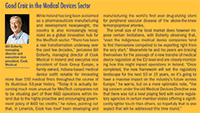
THE STOUT IRISH MARKET: MODEST BUT STRATEGIC
The Irish healthcare market can be characterized as 'modest' but it would be a mistake to dismiss it entirely. Ireland's small size may be an advantage when it comes to implementing the sort of reforms that became necessary following the 2008 economic crisis. Spearheaded by Director General Tony O'Brien, who arrived in 2013, the beleaguered Health Service Executive (HSE) has seen a series of reforms designed to, as O'Brien explains, "break down the health delivery system into manageable parts rather than having a large, singular system ... a flatter organizational structure ... will make our health service more responsive to local needs. This is critical not least because of the escalating burden healthcare represents – already, the HSE spends one out of every four tax euros. In line with this, the HSE is also embarking on an ambitious digitalization strategy, led by Richard Corbridge as the chief information officer (CIO), who also chairs eHealth Ireland, the owner and proponent of Ireland's digital health agenda. The overriding priority has been on creating foundations, Corbridge explains: ensuring that "the e-health agenda was clinician-driven rather than technology-driven."

Mary Harney, chairperson of the European Steering Group (ESG) on sustainable healthcare
The key takeaway is to listen to clinicians – in order to listen to patients. This is why at the Irish affiliate of Grünenthal, an independent, family-owned and research-focused German company, the driving philosophy is about understanding patients before treating them. As Tom Coogan, General Manager, explains, "pain is a very complex syndrome yet we need to challenge existing mindsets around identifying and managing pain. Doctors find it difficult to treat because they sometimes see pain as a symptom of a larger condition. To engage both physicians and patients, we need to make the story interesting, engaging and very creative." This is why Grünenthal has collaborated with the charity Chronic Pain Ireland to develop an innovative way of engaging with patients. As Coogan describes, "we have recently developed a very strong visual on the various types of pain – cold, hot, sharp, creepy-crawly, for instance – to help patients visualize and articulate the type of symptoms they are feeling," adding emphatically, "the chronification of pain is a real issue and in order to better treat patients and improve their quality of life, we need to tell the story of pain in a better way."

Tony O'Brien, director general, HSE
Ireland's smaller market also makes it a good test-bed for pharma companies to test new ways of delivering patient outcomes. As healthcare and technology advance, patients increasingly seek to take back control over their own health; rather than merely being purveyors of pills, pharma companies now need to devise a complete package of care that considers the patient's entire health journey. Ger Brennan, MD (Human Health) at MSD stresses, "providing information to help patients take control of their health and be more empowered is very important for MSD ... Especially for a new drug like one of our immunotherapy treatments, you need to establish the entire ecosystem around that." This was something that was abundantly clear in the report they commissioned on Irish attitudes to healthcare, My Healthcare, My Future: "if you do not build in that complete package of care, patients are left on their own to manage their disease."

Richard Corbridge, CIO, HSE
As a result, MSD Ireland has invested in a number of initiatives to support patients. For their rheumatology business, they have created a program called Vitality, which "captures patient-reported outcomes in real time, where patients can enter symptoms in the app and receive instructions in response," Brennan enthuses. They also participate actively in CSR-type activities like hosting a 'Diabetes Roadshow' with the national charity Diabetes Ireland for the third year running to developing a program with the National Adult Literary Agency (NALA) to identify and commend pharmacies that provide a health literacy-friendly service to patients.
AbbVie's managing director, Todd Manning concurs. "We operate in a hugely competitive environment, so the expectation among patients and healthcare providers is that companies need to do more than provide a pill – we need to be partners in driving better outcomes." Ultimately, patient support programs are "good for society, good for patients and healthcare professionals, and also good for the business organization – which is necessary for the continued funding of these programs." He highlights the package they designed around AbbVie's product for premature babies: "we implemented a nurse support service that allows this injection to be delivered in the patient's home instead of the hospital, which not only makes it more convenient for the patient but also frees up resources in the hospital setting."
Coming full circle to drive the e-health agenda, Abbvie has also implemented a successful digital healthcare public-private partnership. Manning explains that, "a new technology provided by AbbVie called IBDoc ... allows patient testing at home using a smart phone application instead of in the clinic. This resulted in a reduction not just in the number of clinic visits and colonoscopies for the patients themselves but a reduction in waiting times generally for the clinic. In six months, this pilot of 131 patients saved the hospital an estimated EUR 37,500 (USD 40,000)."
NO TROUBLES AHEAD FOR IRELAND
As former Tánaiste of Ireland and former Minister of Health (among many other roles) Mary Harney states, "healthcare in Ireland is very political" – bringing challenges and opportunities alike, whether in the provision of healthcare services or the development of an effervescent life sciences industry. With such strategic positioning, a robust institutional ecosystem focused on attracting productive FDI and a deeply skilled and industrious workforce, it is no wonder that Ireland sees the world as its oyster.
